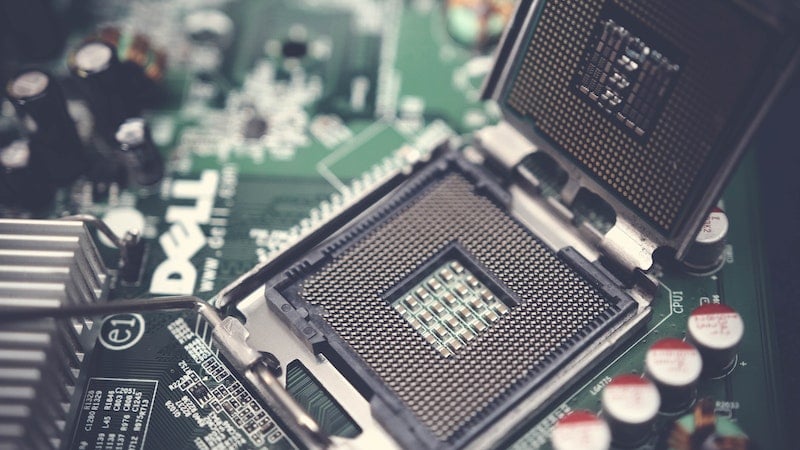Definition of Biochip
A biochip is um microscopic device that is used to perform biological analyzes on a micro or nano scale. Biochip is a generic term that can refer to a variety of devices, including DNA chips, protein chips and cell chips.
The chip itself is made of a substrate, which is usually a solid material such as glass or plastic. The substrate is coated with a layer of organic material, such as proteins or nucleic acids, which is used to interact with biological samples.
Biochips are used in a wide variety of applications, including medical diagnosis, environmental monitoring and scientific research. They are often used to detect the presence of specific compounds in biological samples, such as proteins or nucleic acids.
Biochips are highly sensitive and can detect very low concentrations of biological compounds. This makes them a valuable tool for scientific research and medical diagnosis.
How Biochip Works
A biochip is a device that uses surface plasmon resonance (SPR) to detect and measure interactions between molecules, such as proteins and DNA. SPR is an optical phenomenon that occurs when light is reflected from the surface of a metal and interacts with electrons on the surface. When a molecule binds to the metal surface, the SPR is changed, which can be detected and measured.
The functioning of the biochip begins with the processing of the biological sample that contains the molecules of interest. The sample is applied to the surface of the biochip, which is coated with a thin layer of metal. When the sample comes into contact with the metallic layer, the molecules bind to the surface and change the SPR.
The detection of molecular interactions is carried out using an optical system that measures the intensity of light reflected from the surface of the biochip. When molecules bind to the surface, the SPR is changed and the intensity of the reflected light is modified. This change is detected by the optical system and converted into an electrical signal that can be processed and analyzed.
The biochip is a powerful tool for molecular biology research and can be used in a variety of applications, including disease diagnosis, drug discovery, and studies of protein-protein and protein-DNA interactions. The use of biochips can accelerate the drug discovery process and allow for more accurate and efficient analysis of molecular interactions.
Biochip technology
Biochip is a technology that combines microarray and integrated circuit technology to create mini-laboratories on substrates designed to perform a variety of functional operations. This technology allows researchers to perform tests on small amounts of biological samples, saving time and resources.
Biochips are built on substrates designed with precise control of temperature and other variables, to ensure accurate and reliable results. Substrates are typically made from materials such as silicon, glass, or plastic, which are designed to interact with biological samples in specific ways.
Biochips can be used to perform a variety of tests, including DNA analysis, disease diagnosis and toxicity testing. They are particularly useful in genomics studies, where the ability to analyze large amounts of data quickly and accurately is essential.
Biochip technology has evolved rapidly in recent years, with advances in engineered substrates, laboratory miniaturization, and functional operations. These advances are allowing researchers to perform more complex tests on smaller samples, saving valuable time and resources.
Types of Biochips
Biochips are devices that contain a wide variety of microscopic sensors capable of detecting and analyzing biological information. There are several types of biochips, each with its own application and technology.
Microarray
Microarray is a type of biochip that contains a large number of DNA or protein probes on a solid surface. It is used to measure gene expression, identify genetic mutations, and detect specific proteins. DNA microarrays are often used in genomics and proteomics research.
DNA biochip
DNA biochips are similar to microarrays, but are used to detect specific DNA sequences. They are often used in diagnostic applications such as paternity testing and detecting genetic diseases.
Protein Biochip
Protein biochips are used to detect specific proteins in biological samples. They are often used in proteomics research and medical diagnostics.
GeneChip
GeneChip is a type of biochip that contains DNA probes specific to human genes. It is used for diagnosing genetic diseases and identifying genetic variants.
DNA sensors
DNA sensors are biochips that detect specific DNA sequences. They are often used in diagnostic applications such as paternity testing and detection of genetic diseases.
Microfluidics digital biochips
Digital microfluidics biochips are used to manipulate fluids on a microscopic scale. They are often used in diagnostic applications such as rapid diagnostic tests and analysis of biological samples.
Biochip Applications
Biochips are widely used in a variety of applications, from genetic research to bioterrorism identification. They are capable of storing and processing information about cells, proteins and genes, making them a valuable tool for disease diagnosis and drug development.
Biochips are also used in cancer research, allowing the identification of proteins and genes associated with the disease. They are capable of detecting changes in gene expression levels, allowing the identification of new therapeutic targets.
Furthermore, biochips are widely used in immunoassays, such as immunofluorescence and immunohistochemistry assays. These assays are used to diagnose diseases and monitor response to treatment.
Biochips are also used in clinical diagnostic applications, enabling the detection of infectious and genetic diseases. They are able to detect specific antibodies and antigens, allowing early diagnosis and appropriate treatment.
Furthermore, biochips are used in molecular biology applications such as nucleic acid hybridization and proteomics analysis. They are capable of detecting the presence of specific RNA and proteins, allowing the identification of therapeutic targets and the analysis of cell signaling pathways.






